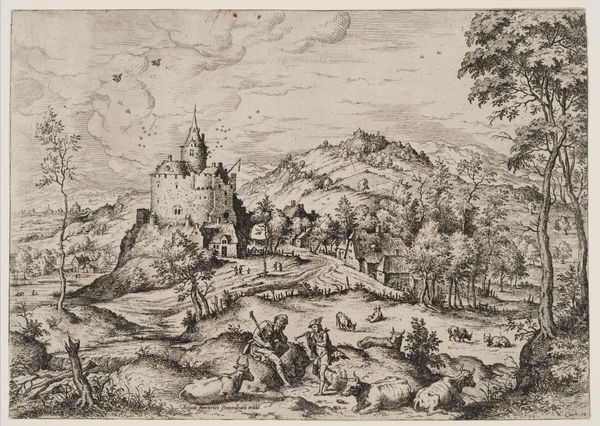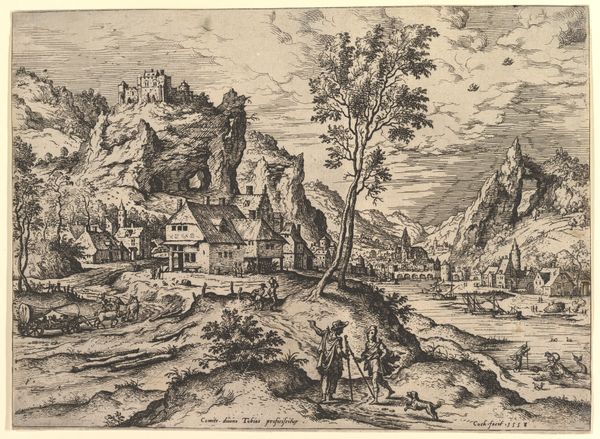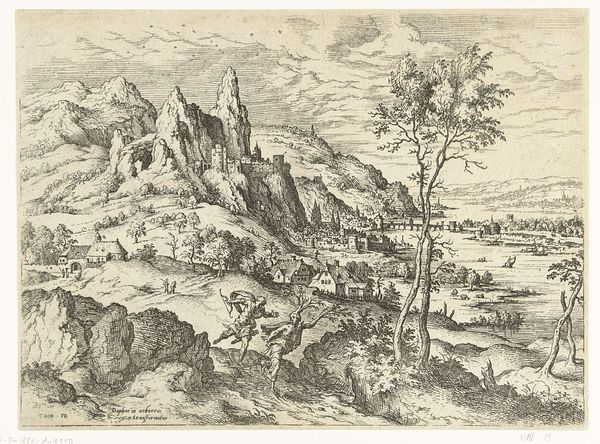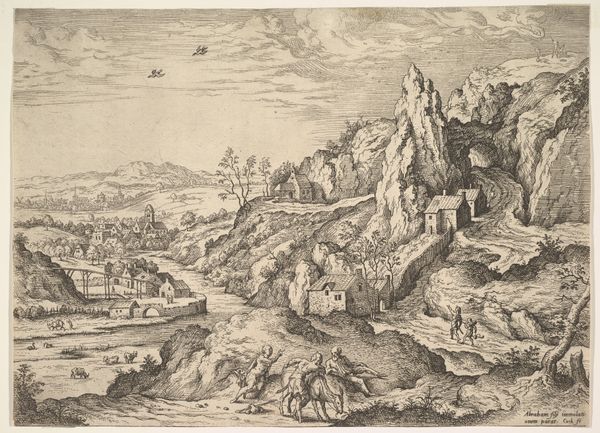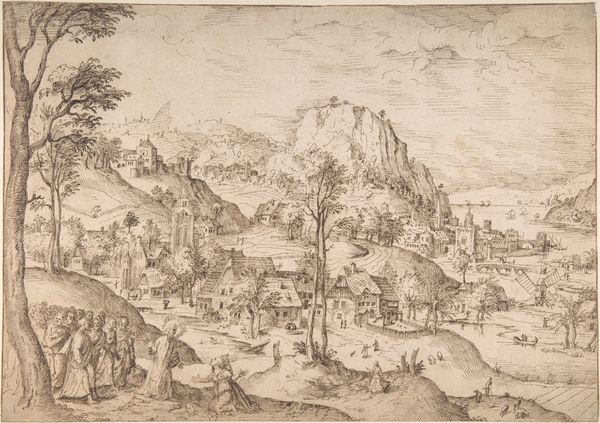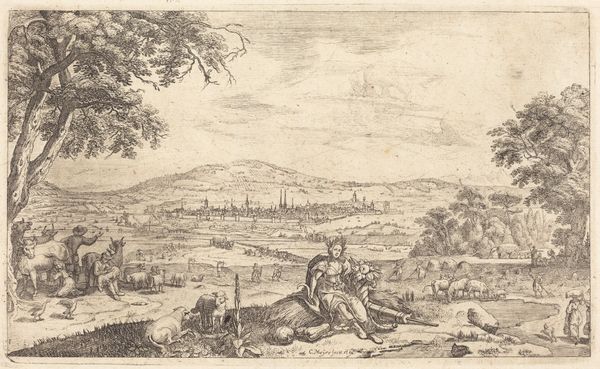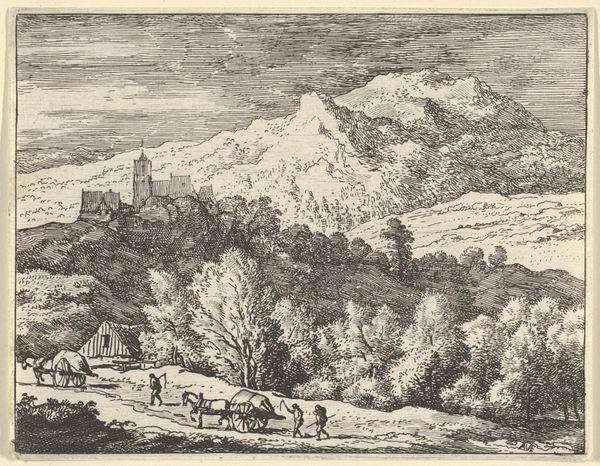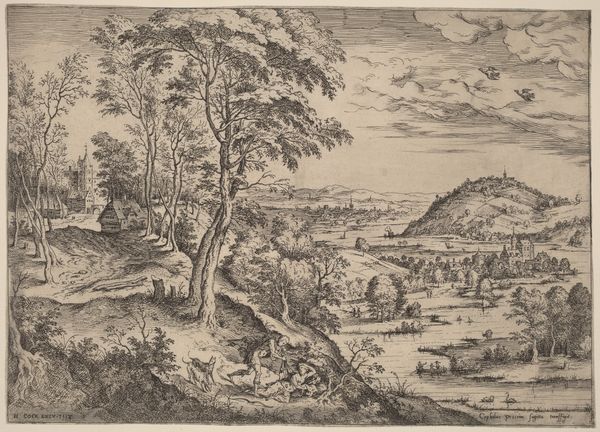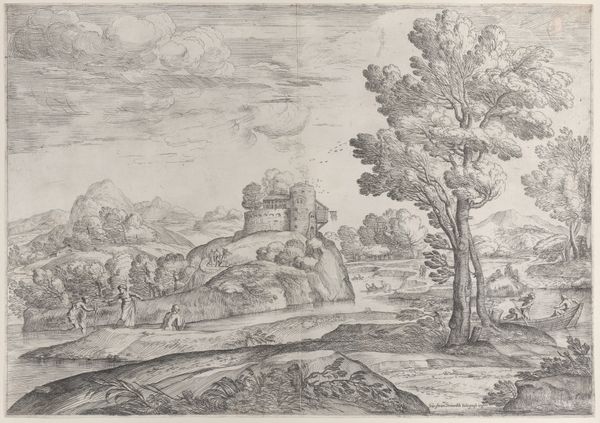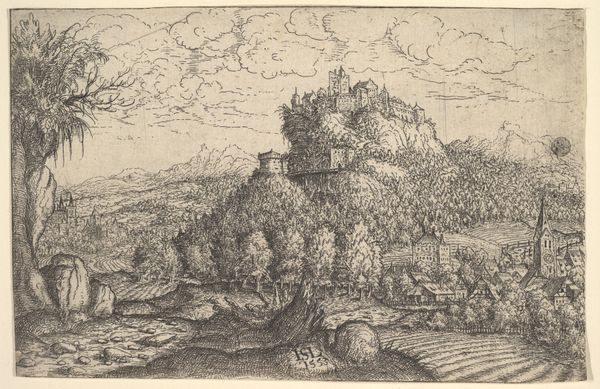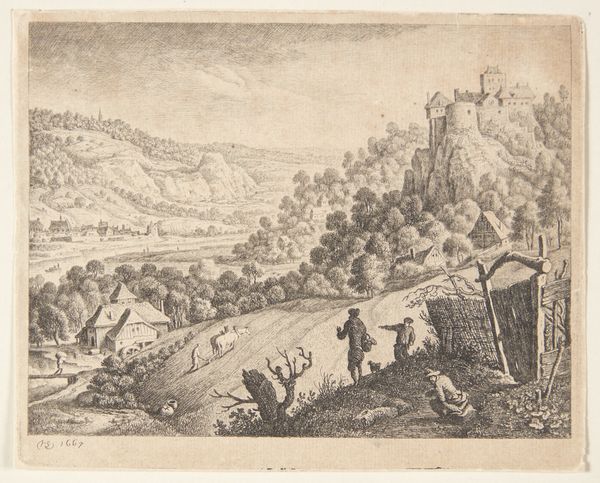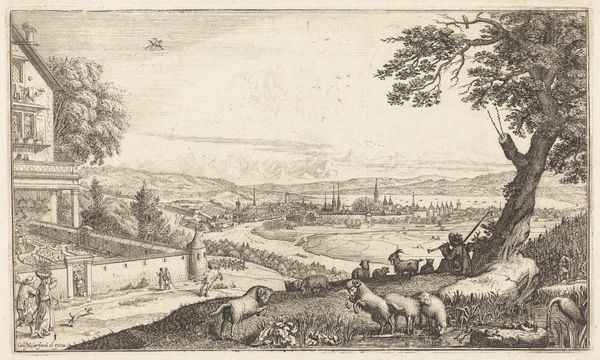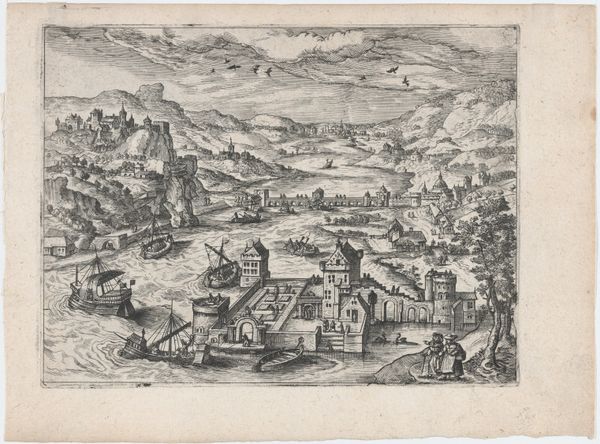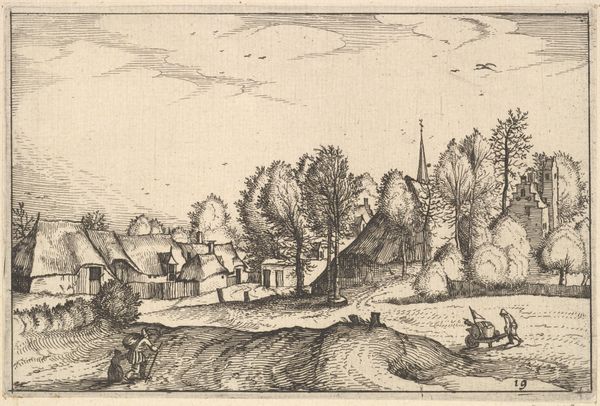
Mercury Lulling Argus to Sleep from Landscapes with Biblical and Mythological Scenes 1558
0:00
0:00
drawing, print, engraving
#
drawing
# print
#
landscape
#
mannerism
#
history-painting
#
engraving
Dimensions: Sheet: 8 15/16 x 12 3/4 in. (22.7 x 32.4 cm)
Copyright: Public Domain
Curator: This intricate engraving is titled "Mercury Lulling Argus to Sleep," made around 1558 by Hieronymus Cock. It’s part of a series, "Landscapes with Biblical and Mythological Scenes". The print utilizes delicate lines to create a rich, detailed landscape. Editor: It gives me an immediate sense of industrious calm. The detailed rendering of everyday labor combined with this dramatic scene creates an intriguing contrast, almost like labor as ritual. Curator: Indeed! The scene depicts the mythological tale of Mercury, sent by Jupiter to slay Argus, the hundred-eyed giant guarding Io. Mercury is lulling Argus to sleep with his music, and you see cows in the pasture. The castle, the cottages—all meticulously rendered—emphasize the intersection of the mythical with the mundane. This is how early modern art and popular culture helped normalize even the wildest narratives from antiquity and the bible. Editor: Right. As a print, it served to disseminate this image widely, democratizing a classically erudite theme and experience across social classes. Engravings facilitated the exchange of ideas and visual culture, becoming almost like social media of their era. How long might a craftsman have spent creating the metal plates and printing it for hundreds or even thousands of consumers? Curator: A significant amount of skilled labor was certainly required. This was an act of commerce and promotion, and we should note how artists were actively crafting and feeding Europe's insatiable hunger for landscape, allegory, and narrative from printmakers. The image also participates in that grand humanist tradition of reviving classical narratives, thereby associating patrons, collectors, and the artists themselves with this elevated symbolic order. Editor: The technique itself—engraving—allowed for an incredible level of detail. Looking closely, the rendering of foliage, animals, and the architectural detail of the distant buildings would require careful carving to the metal block, evidencing high levels of both training and access. Curator: It is incredible the depth of tone they created, and there are so many stories compressed in one frame, aren't there? The image itself invites this active decoding by its viewer. Editor: True, but that level of intricacy and skill speaks to the evolving status of artists during the 16th century—less anonymous craftspeople and increasingly celebrated intellectuals with unique artistic styles. It reminds us of how technical skill contributed towards claims to knowledge. Curator: A fantastic piece brimming with meaning. Its power lies not just in its aesthetic beauty but in its embodiment of historical and symbolic narratives that continue to resonate. Editor: Indeed, an evocative object lesson in how processes and artistic practice intertwine, enriching the layers of history we project onto artworks.
Comments
No comments
Be the first to comment and join the conversation on the ultimate creative platform.
